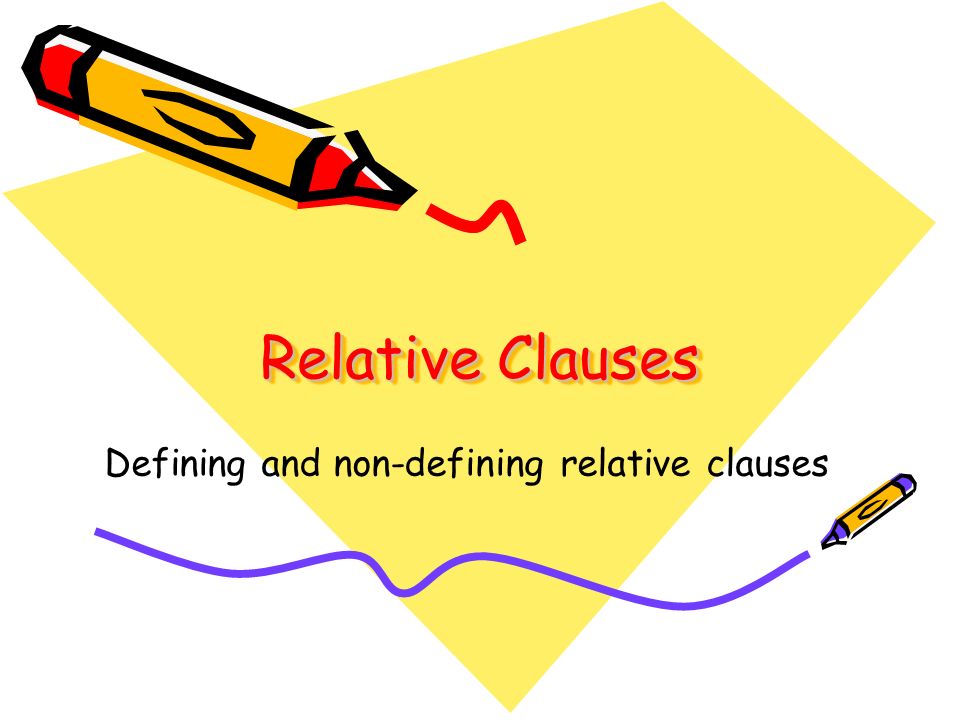What are relative clauses?
A relative clause is a subordinate clause that modifies a noun or a noun phrase.
Example:
The man who is smoking is the murderer
The noun the man is modified by the relative clause who is smoking.
Relative clauses give essential information to define or identify the person or thing we are talking about.
How to use relative clauses
They are used to provide extra information. This information can either:
- define something (defining clause),
Example:
The girl who is standing there is a world champion in karate. - or provide unnecessary, but interesting information (non-defining clause).
Example:
Michael Jackson, who was a famous singer, died of an overdose.
Relative clauses can be introduced by:
- A relative pronoun: who, whom, which, that, whose.
Example: “The man who is standing there is a famous writer.” - A relative adverb: where, why and when.
Example: ” The restaurant where I have dinner is nice.” - None of them.
Example: “The man I met is extremely wealthy”
Relative pronouns
who – subject or object pronoun for people
They caught the lady who killed her baby.
which – subject or object pronoun
I read the book which is on the table.
I visited the town which you told me about.
which – referring to a whole sentence
They were unsuccessful which is disappointing.
whom – used for object pronoun for people, especially in non-restrictive relative clauses (in restrictive relative clauses use who)
The boy whom you told me about got the best grades in mathematics.
that – subject or object pronoun for people, animals and things in restrictive relative clauses (who or which are also possible)
I like the vase that is over there.
Relative adverbs
where – referring to a place
The restaurant where I usually have dinner is nice.
when – referring to a time
There are times when I feel so lonely.
why – referring to a reason
This is why she refused the offer.
Subject pronoun or object pronoun?
You can distinguish subject and object pronouns as follows:
- If the relative pronoun is not followed by a noun or pronoun, it is a subject pronoun. Subject relative pronouns can never be omitted (dropped.)
Example:
The apple which is lying on the table is sweet.
The teacher who lives next door is nice. - If the relative pronoun is followed by a noun or pronoun, the relative pronoun is an object pronoun. Object relative pronouns can be omitted (dropped) in restrictive (defining) relative clauses.
Example:
The film (which) we watched yesterday was fantastic.
The writer (who/whom) we met last weekend is very famous.
Restrictive relative clauses
1. Restrictive (identifying or defining) relative clauses give detailed necessary information. They are not put between commas.
I know the man who is standing there
2. These clauses are often used in definitions.
A novelist is someone who writes novels.
3. Object pronouns in these clauses can be omitted (dropped.)
Example:
The boy (who/whom) we met yesterday is from New York.
Non-restrictive relative clauses
Non- restrictive (non-identifying or non- defining) relative clauses give interesting additional information which is not necessary to the meaning of the sentence. These clauses are put between commas.
Example:
Martin Luther king, who was known for his fight for the civil rights, was assassinated in 1968.
Note:
In non restrictive relative clauses:
1. who/which may not be replaced with that.
Example:
Jim, who we met yesterday, is very nice.
NOTJim, that we met yesterday, is very nice.
2. Object relative pronouns cannot be dropped.
Example:
Jim, who we met yesterday, is very nice.
NOTJim,we met yesterday, is very nice.

